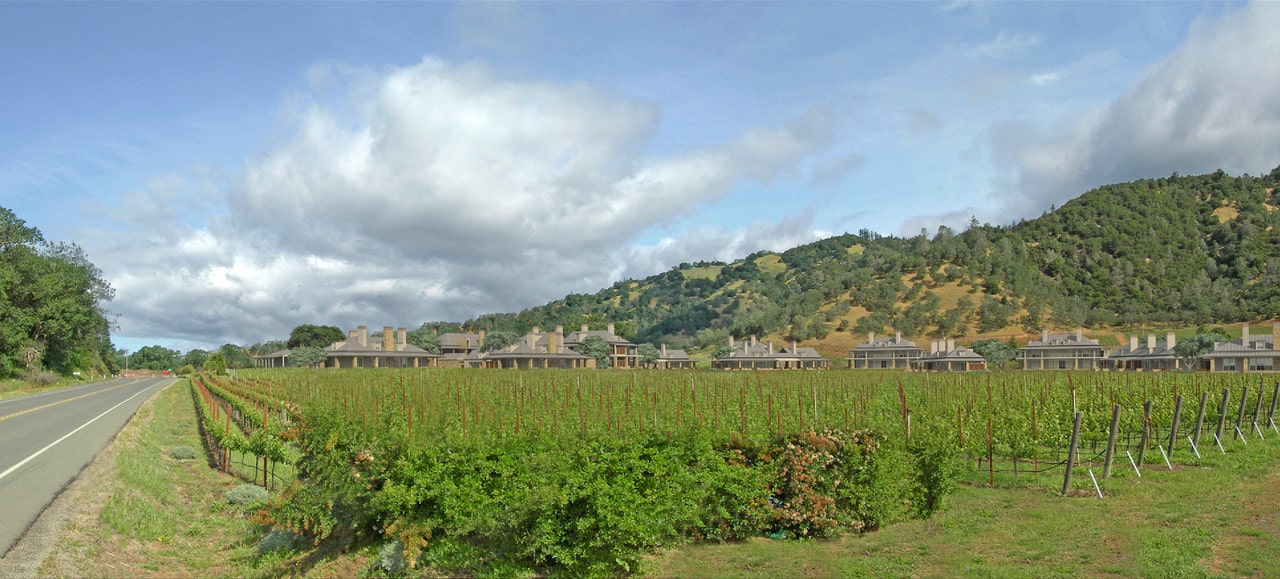Terrano Resort Napa Valley
Size of property
25 acresAcquisition Cost
$250,000 Option to acquire site for $17 million plus $8 million to design and secure building permits for luxury resort.Keys
130 keys configured as 40 private residence club units with a winery, tasting room on Silverado Trail, and premium vineyard.What we accomplished
In December 2007, we secured unanimous approval just as our joint venture partner, a major Wall Street firm, faced billions in losses and had to abandon all its real estate investments. They asked us to find a replacement capital partner and we did so within a month. However, by March 2008 the replacement private equity fund also could not proceed due to the collapse of major Wall Street firms.
We arranged $100 million of equity and debt capital for the proposed development which we got permitted, but we could not proceed due to the 2008 global financial crisis. We successfully wound up the venture, honoring commitments to the City, paying vendors ourselves and mitigating costs because we structured the initial acquisition as an option to purchase the site after securing permits. If we had purchased the site upfront, the losses would have been significant. Instead, the losses were limited to the costs of designs and permitting.
To protect the landowners, we negotiated an extension of the mortgage loans they previously had on their property, and thus saved them from foreclosure during the financial crisis. Nearly fifteen years later the site opened as the Four Seasons Resort Napa Valley and was sold in 2022 at a US hotel record price of over $175 million for the 85 key resort. We identified this opportunity years ahead of other developers and the Four Seasons Resort and sale validated our judgment. Read Less
